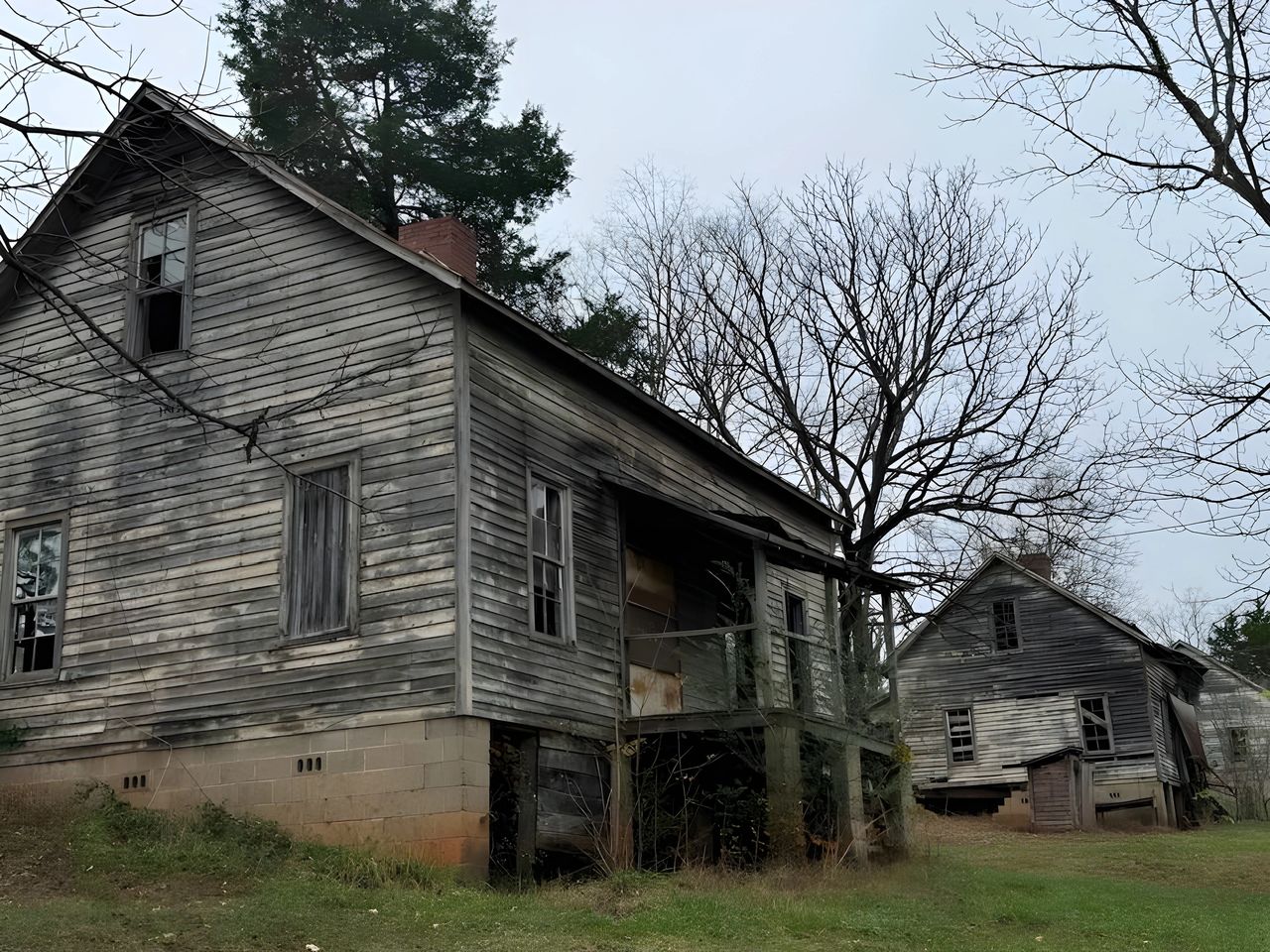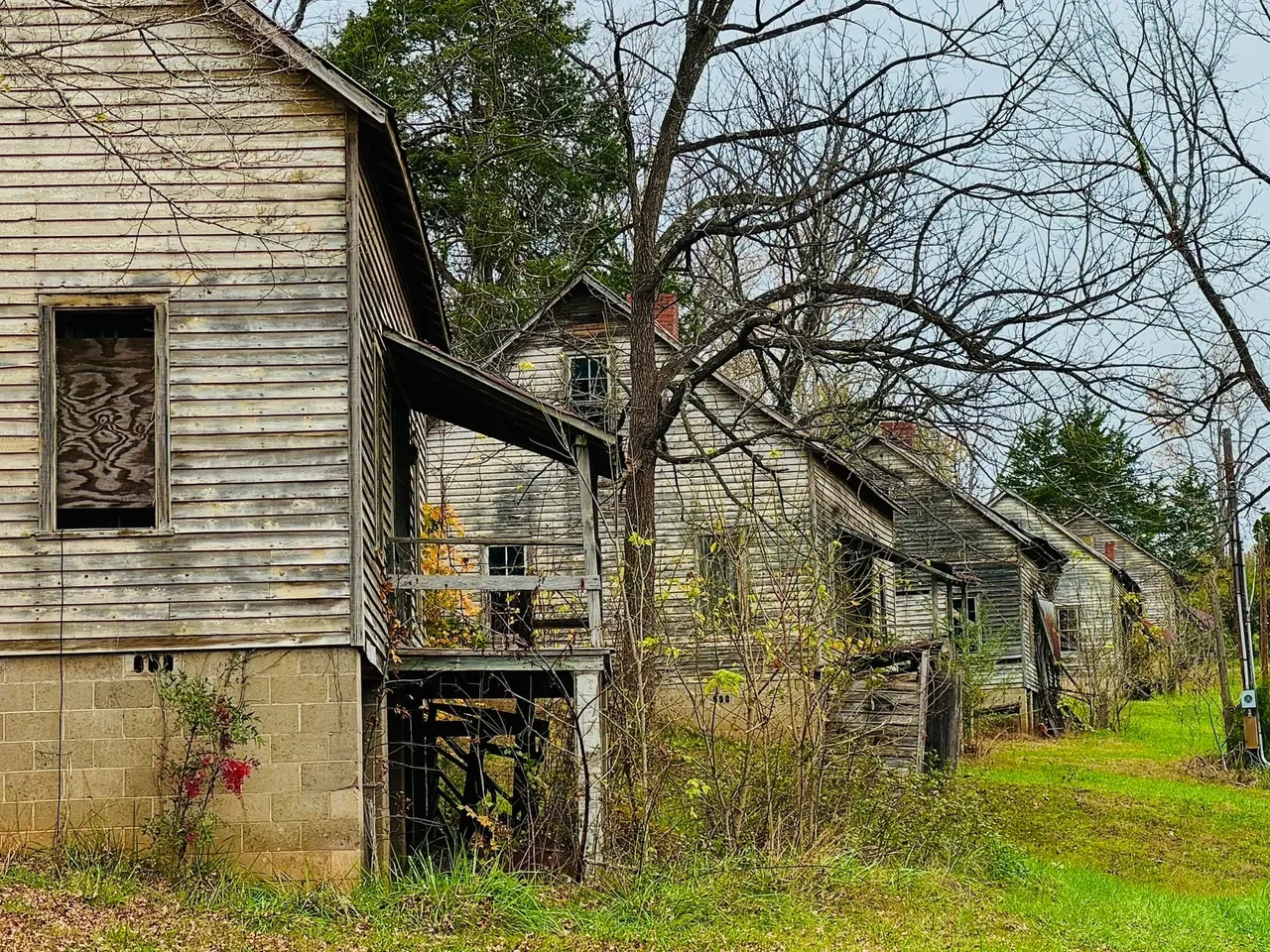If you’ve ever wanted to own an entire Appalachian ghost town, complete with more than a dozen early 1900s mill houses and an old brick general store, this could be your chance.
Tucked in the foothills of North Carolina, Henry River Mill Village is one of the most intact ghost towns in the country.
Even if you’ve never visited, you’ve probably seen it. Its decaying, yet enchanting, appearance made it a perfect filming location for post-apocalyptic The Hunger Games franchise. It appears as District 12, the hometown of Katniss Everdeen. Even today, the village allows visitors a peek inside the mill house that served as Katniss’ home.

For several years, visitors could pay to tour the entire town — roaming the magnificent 40+ acres of dilapidated wooden homes and sheds, with ancient trees curling over the horizon and curtains of ivy creeping up cracked windows. Inside, many of the homes still had furniture, faded and overturned, providing a time capsule to life in an early 1900s mill village. Visitors could even stay the night.
Sadly, the future of the historic Henry River Mill Village is now unclear. The ghost town is up for sale for a total of around $2 million for the two combined parcels. Historians and locals are hoping to see the village restored as a historic site — with some saying they are nervous the abandoned houses and prime property may attract bulldozers and developers instead.
A thriving, happy mill village
There was a time when mills were the heart of the economy in North Carolina. You needed grist mills for food, lumber mills for housing, cotton mills for clothes. A job in a mill was harsh, dry and thankless — but it often meant a regular paycheck and a home in the surrounding village. Sometimes the entire family went to work in the mill, including children.
In its heyday, Henry River Mill Village featured a large industrial cotton mill on the riverbank. Employees were assigned a beautiful, white-washed house to live in. Grassy yards were full of hanging laundry and gardens full of fresh food.

Often, the mill owned the entire town, including churches, houses and shops — so life revolved around the mill. Everyone worked together; your co-workers were also your neighbors. If a good family was in charge, life would be good. If a bad family owned the mill, life could be really hard. But often the community pulled together to build a simple and happy life.
The Aderholdt family had set out to create a special kind of village — offering clean homes and a comfortable community. Newspaper articles touted the Henry River Mill Village as having exceptionally beautiful homes and happy families. Instead of working all day in the mill, some of the children were able to attend school, and many of the families, illiterate when they arrived, were afforded opportunities to learn to read.
“They are a rugged type of mountain folk, great believers in pure home life and intensely religious,” wrote The Charlotte Observer in 1919.
Under the watch of the beautiful Appalachian mountains, the Henry River Mill Village thrived for many decades.
Why did Henry River Mill Village become a ghost town?
Established in 1905, the village raised generations of families.
Many ghost towns in North Carolina were, at one point, mill villages. By the mid-1900s, mills were no longer central to the economy. Slowly, the small mill villages that once dotted the riverbanks of NC began fading away, their residents moving to nearby cities for better opportunities.
The mill ceased operations by the 1970s, and in 1977 the property was bought by Wade Sheppard. Shortly after, the main mill burned to the ground.

The village website says the final resident left sometime between the 1980s or 2000s.
For years, urban explorers went rifling through the abandoned homes; the owner was constantly chasing off trespassers. Eventually, the village was opened for visitors, making it one of the only ghost towns guests could tour and even stay overnight.
There are several historic mill villages in North Carolina have been restored or maintained. Rocky Mount has transformed their large mill into modern apartments and office spaces, with the surrounding structures taken over by breweries, restaurants and coffee shops. The mill village is being used as cozy housing. McAdenville’s downtown area still has the original mill housing, as well, and the old mills still look like a castle wall.
However, Henry River Mill Village is special because, rather than being modernized or restored, it remained an untouched time capsule.
“Henry River is an example of history that seems so distant, yet it can still be seen, touched and heard with our own eyes and ears,” wrote the current owners.
What will happen to Henry River Mill Village now?
It’s hard to say. With it going up for sale, its future — and its connection to the past — depends on what the new owners do with it.
Will it remain open for visitors? Will they close it up as a private community? Will developers find a way to tear it down?
The current listing seems hopeful, saying, “This property is filled with promise. Several charming, albeit abandoned, homes await renovation, providing a perfect canvas for restoration enthusiasts or developers.”
If you want to buy it for yourself and help make history,
